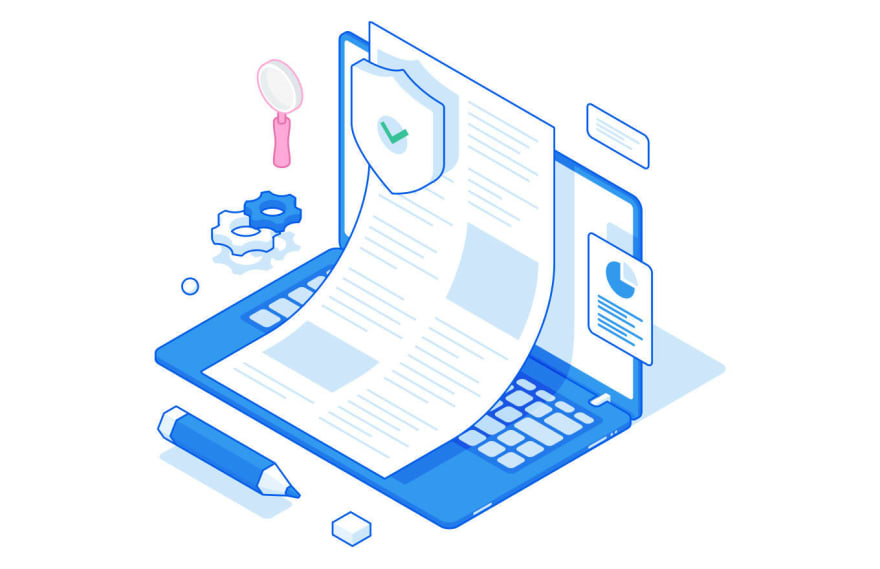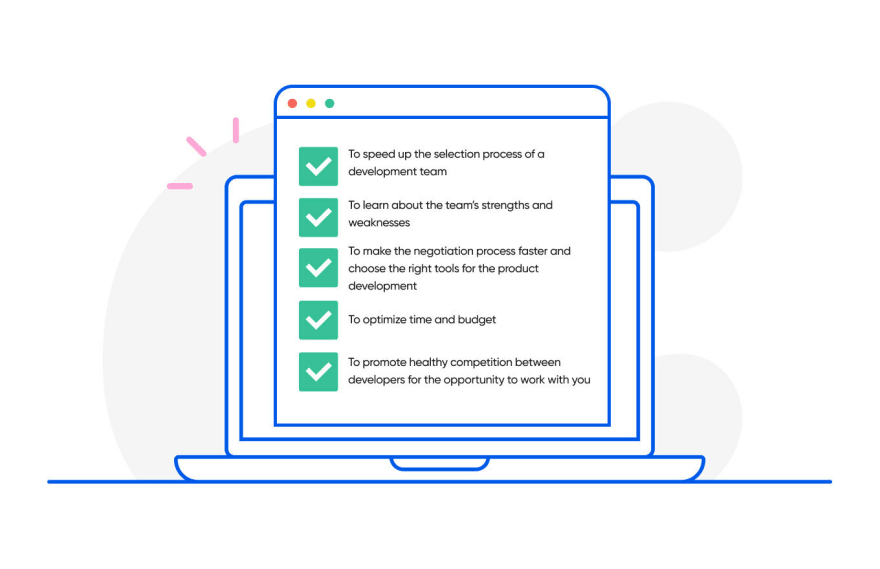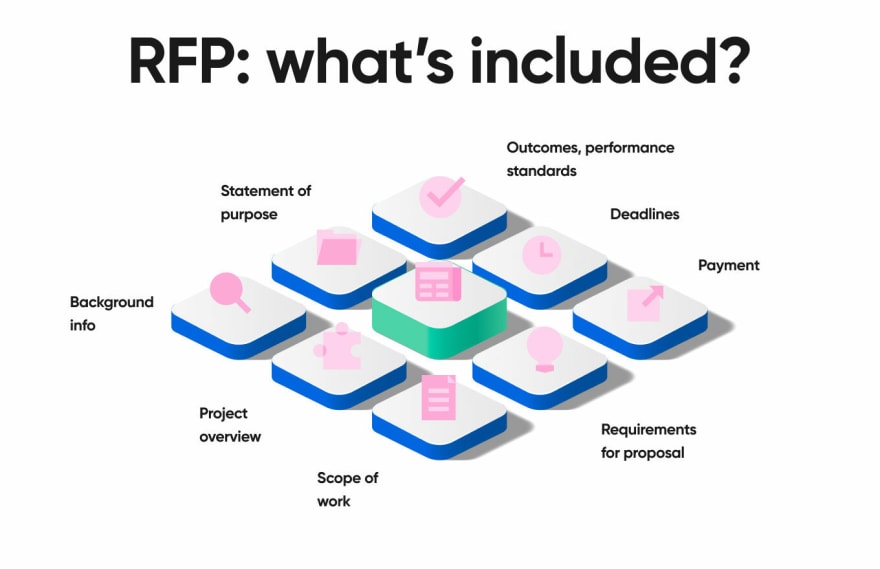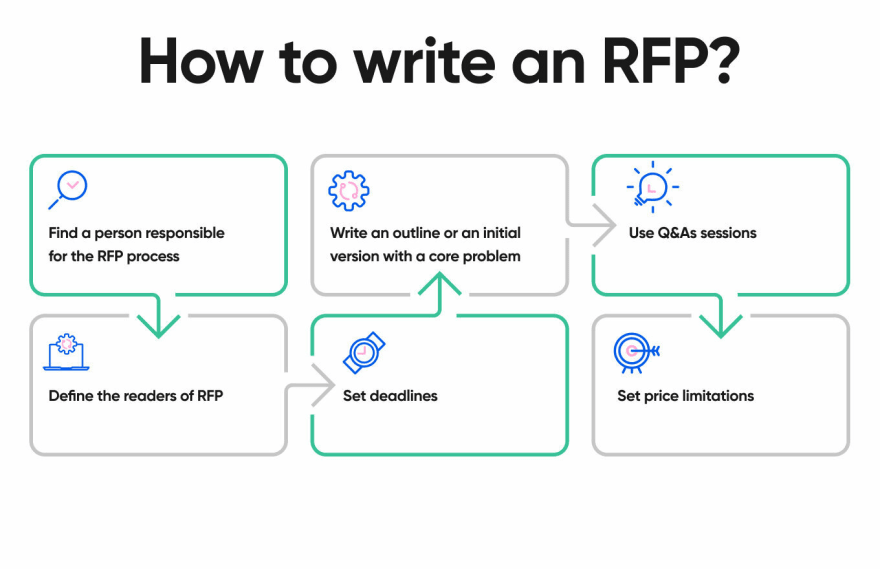The original article was written by SoftFormance https://www.softformance.com/blog/rfp-for-software-development-in-2022/
Eight years ago, I bought an apartment and needed to renovate it. I had to find a team of designers and builders but had no previous experience and did not know how to choose one.
As a result, I chose a team that did not meet my expectations, missed the deadlines, and overall did not do a great job. I analyzed my mistakes and realized that I forgot about one essential thing – a detailed written explanation of the project.
If I had a written document with all the details about the apartment, what I want it to look like, what are the deadlines, and how I would pay the workers, it would be much easier to choose a suitable team.
Thus, I then created this document and sent it to a number of the teams I selected. I wanted to know who would be willing to work on my project and what they could propose to me.
This allowed me to compare the teams and find the one that I am still working with, even eight years later.
In software development, you need a similar document if you want to work with development agencies. This document is called an RFP, or a Request for Proposal.
Like all documentation in IT, an RFP is all about precision and following a clear structure. If you do it right, it will help you make the right choice of a team, learn about the principles of their work, and save your precious time.
A software development RFP can also uncover the strengths and weaknesses of a team, and it’s a great thing to know before starting to work with someone.
If you have never written a software development RFP before, I will help you learn more about its structure, main principles, and the way we do it at SoftFormance.
This knowledge will help you save time, avoid mistakes during the selection process, and find a team of software developers that will create a high-quality successful product that will keep you competitive in the market.
What is an RFP?
An RFP, or a request for proposal, is a document that describes your future project in detail for the potential development team. It helps them get acquainted with your company, learn about the key specifics of the project, and learn about your requirements.

Writing an RFP helps you choose among several development teams and learn about their work practices, strengths, and weaknesses at the same time. With this document, the selection process becomes easier and it’s less likely that you would need to change a team in the future.
With an RFP, you can compare different vendors’ software development proposals, evaluate the ways they address the same problem, and see whether they are suitable for your project. Moreover, an RFP allows comparing the approaches of various third-party providers.
Why do you need RFP?
Product development is an extremely complex and time-consuming process, and you need to make sure that it is as smooth and transparent as possible. To achieve that, one thing you need is a software development RFP.
If your project is complex, requires a lot of technical data, and you are looking for an experienced team that can handle specific challenges, RFP should be your best friend. Sometimes, requirements and project details cannot be briefly explained in traditional meetings, and that’s when you need to document everything.
So why exactly would you need an RFP?
To speed up the selection process of a development team
To learn about the team’s strengths and weaknesses
To make the negotiation process faster and choose the right tools for the product development
To optimize time and budget
To promote healthy competition between developers for the opportunity to work with you

You can also use your RFP to exchange details of your projects with other companies and collaborate with them. Once your company releases data about a future project, competition begins, and potential development teams propose their ways of development and solutions to your problems.
RFP: what’s included?
To make your RFP work and help you choose the right development team, you need to follow a specific structure and include relevant data. The proposals you will get depend on what you include in your RFP. Years of experience have proven that this specific structure is highly effective:
Statement of purpose
Start your RFP with an explanation of why you need developers’ help. Describe the main idea of your project, what should be done, and why you need a third-party provider’s help. Remember to keep it short.
Background info
Your future vendors need to know about the history of your company, what you do, and what your core values are. Tell them about your customers, what you stand for, and what you are doing now. Your development team should not only learn about the future project but about your entire company and your vision to understand your needs better.
Project overview
This part of an RFP should include general information about your project, what needs to be done, and its scope. It will help the team determine whether they will manage to take this responsibility and work on the project.
Scope of work
Defining the scope of work is key when writing an effective and detailed RFP. Describe your expectations from the technical and business perspectives, list the expected outcomes, and include other requirements, such as:
Technical requirements. Mention what programming language or frameworks you would want to be used and include other technical requirements that you think are essential.
Business requirements. Don’t forget about the customer’s perspective. Describe the functionality of your future product, and how it should be used by your customers, and include info about the business logic, customer needs, and expectations.
Functional requirements. In this section, describe the functionality of the product and how its functions will fulfill the business needs.
Outcomes, performance standards
Always include information about the outcomes and performance you expect to see. Set your minimums of what exactly should be done and how you will monitor the vendor’s performance. It’s a great idea to make a checklist, too.
Deadlines
All processes should have clearly defined deadlines. This will help the development team to plan their work and you to control the process.
Payment
The development team should know how you will pay them, whether additional expenses are included, and if there are any fines. Everyone should be aware of the payment process so that there are no questions in the future.
Requirements for proposal
You should always describe your requirements for the proposal: its volume, type of the document, how you want it to be constructed and look like. Describe it as detailed as possible as it will help you save time and make better comparisons between different proposals in the future.

How to write an RFP?
If you want to write an effective software RFP, there are several steps to follow. Following this guide will help you minimize possible errors and negative scenarios. Here are the steps you should follow:

Find a person responsible for the RFP process
Don’t scatter the tasks across a huge team of people. Find one leader who will be responsible for writing the software RFPs. This person will ensure that everyone is on the same page: the stakeholders, the vendor, and the decision-makers. A leader will have more knowledge about the RFP and dedicate all time to its writing.
Write an outline or an initial version with a core problem
All projects must solve a specific core problem, and yours is not an exception. Gather your team, discuss the possible problems, and collect all the ideas and propositions. The opinions of your team members matter, and you should take them into account when writing an RFP.
Use Q&As sessions
Deciding with an idea for your project is an important step but you also need to be able to make it happen. To ensure that your idea is possible to bring into life, gather data on how to do it. For instance, you can organize Q&As sessions with a vendor or within your team.
Define the readers of RFP
An RFP that suits one team of developers can be unreadable and confusing for another. That’s why it is important to research the market of talent, see what specific vendors offer, and define who can meet your needs. You should create an image of a “perfect vendor” for your project, with as much detail as possible. This will help you narrow down the search, save you time, and help you avoid serious mistakes during the selection process.
Set deadlines
Writing an RFP can take a lot of time, especially if you’re doing it for the first time. That’s why you should set deadlines for each step of writing an RFP. Then, everyone will know what to expect and when to expect it. Furthermore, setting adequate deadlines will ensure that there’s no rush, and you take the time needed to write a high-quality RFP.
Set price limitations
When developing any kind of product, budget plays a vital role. You don’t want to waste money on unnecessary staff or lose it due to some mistakes. Thus, gather information about the budget you would need to develop your software. The development team would need to know the prices to decide whether they are ready to accept your offer and work on your project.
SoftFormance RFP Process
At SoftFormance, we don’t always require an RFP from a client when starting to work on their project. A more common practice at our agency is doing workshops, especially for those business owners who have never developed products before.
These workshops usually last a couple of days, and we cover the development process from A to Z.
What about an RFP?
We talk it through and compile it during the first workshop day. We discuss the details of the project with the client, talk about the goals, tasks, and possible problems together.
Thus, if you have never compiled an RFP before – it’s not a problem. We can work on it together during the workshop.
This is what one of the documents we share with the clients looks like:

The workshop usually consists of four parts: Getting Started and Your Homework, Product Strategy, Project Roadmap, and Workshop Deliverables.
During the first step – Getting Started and Your Homework – the client gets acquainted with the workshop agenda and deliverables, the timetables of the workshop days and what we’ll do together, and gets their first pre-workshop homework.
They are not required to finish every task at 100%. They might skip parts that they don’t understand or don’t have answers to.
Our main piece of advice during this step is to follow these instructions:
Set Your Goals
Work On Lean Canvas (Business Model)
Conduct Customer Interviews
Review Your Software Business Name
During the second step – Product Strategy – we focus on the Business Side of your startup idea, which directly influences the project scope. So, the more we know, the better we do later. This step takes one full day if done onsite or two days when done remotely.
Next, we move on to the Project Roadmap. This step includes working on project requirements, specifications, technical analysis, and the MSP version. It usually takes an entire day onsite. Or two partial days when done remotely.
Finally, the Workshop Deliverables step is all about preparing all the deliverables starting from project specifications and finishing up with the quote, technology stack, technical experiment, and overall software blueprint.
Wrapping up
A properly written RFP is a key to effective communication with the development team, especially if it’s a third-party provider. Since RFP directly influences the success of your cooperation, it is essential to learn how to write it properly.
At SoftFormance, we don’t expect our clients to come to us with a prepared RFP. Instead, we work on it together, helping them come up with the project goals, tasks, and all the details.
That is the main goal of our workshops – to help clients learn about the development process of their product and to cooperate with us constantly.
If you have any questions or want to cooperate with us, contact us.



Top comments (1)
Hi...do u have experienced in Machine learning programming?
Some comments may only be visible to logged-in visitors. Sign in to view all comments.